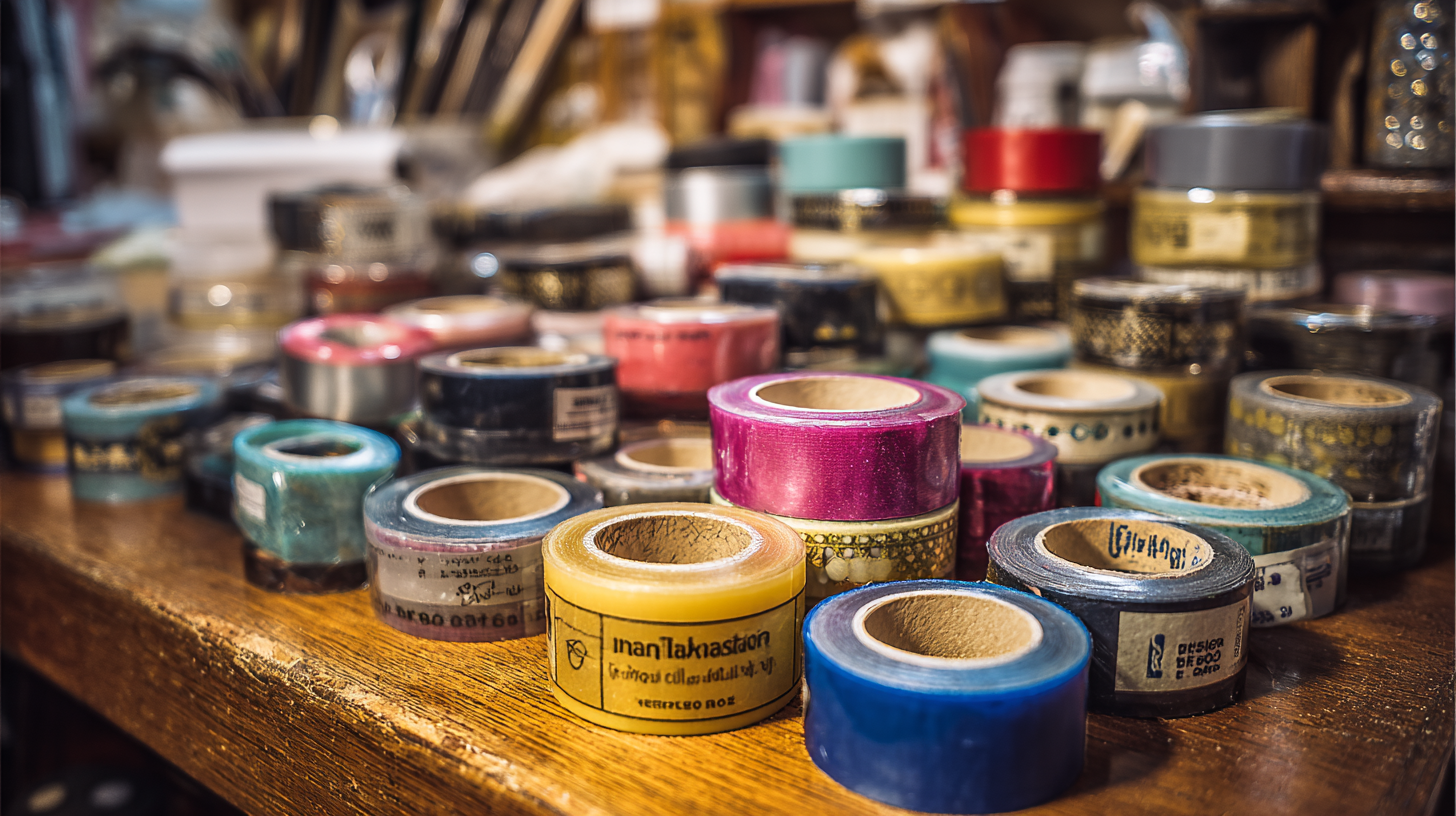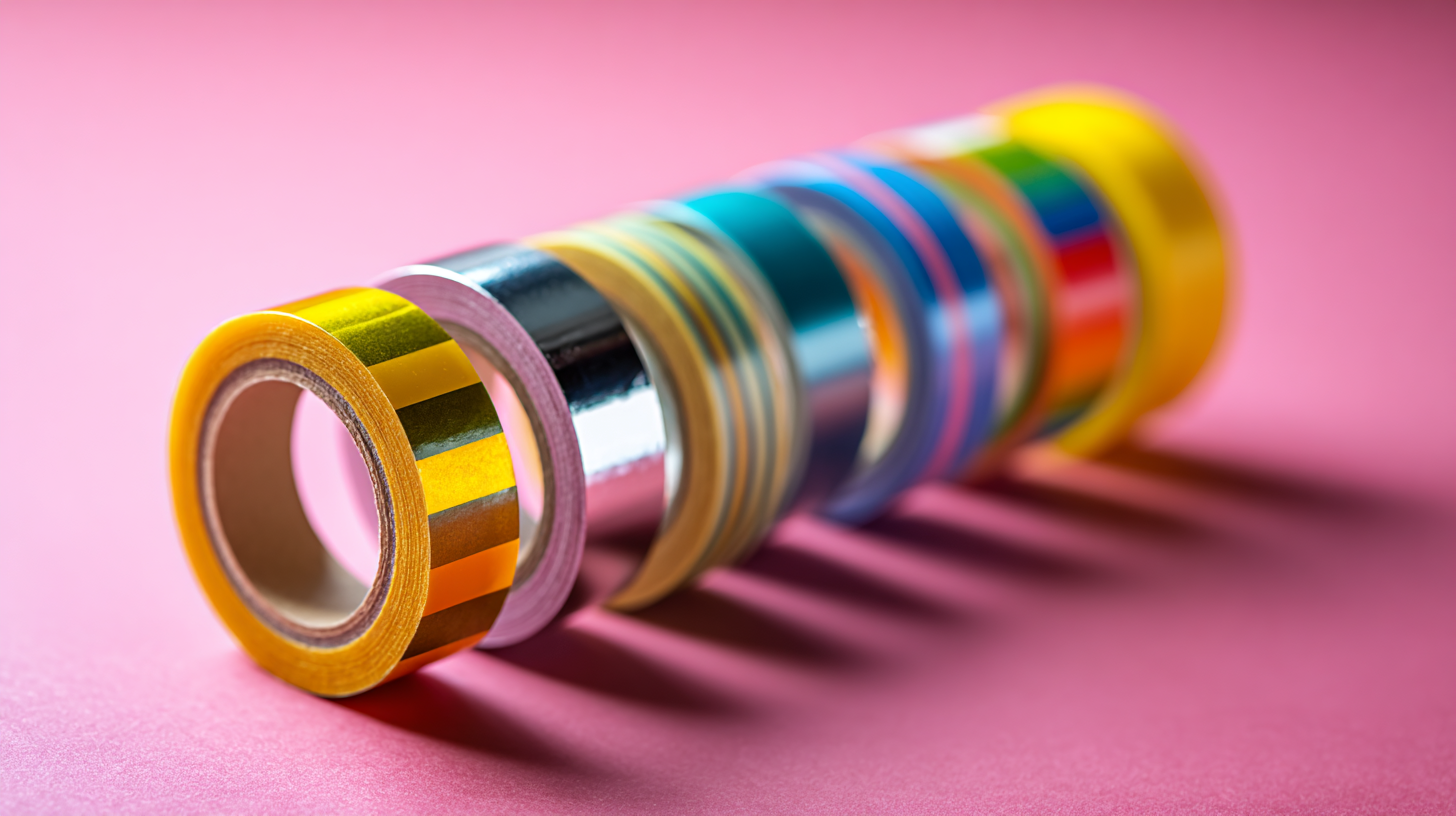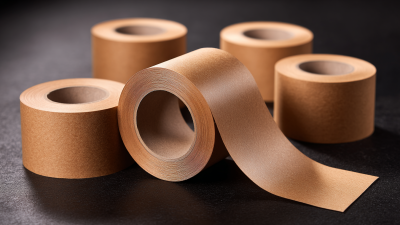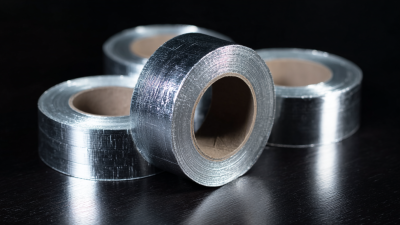Leave Your Message
-
Phone
-
Email
-
Whatsapp


The evolution of stationery tape has transformed it from a basic adhesive used for minor repairs into a vital tool in the crafting community, showcasing its versatility and increasing demand. According to a report from Smithers Pira, the global adhesive tapes market was valued at $55 billion in 2020 and is projected to reach $75 billion by 2026, with stationery tape playing a significant role in this growth. This rise can be attributed to the burgeoning interest in DIY projects and personalized crafts, as more people embrace creative expression. The introduction of various types of stationery tape, such as washi tape and double-sided tape, further emphasizes its role not only as a functional accessory but also as a medium for artistic exploration. As we delve into the journey of stationery tape, we will explore how its development has influenced both everyday tasks and the craft industry, ultimately establishing it as an essential item in workshops and homes alike.

The use of adhesive tapes can be traced back to ancient civilizations, where natural materials like tree resins and animal glues were utilized for bonding purposes. In the early 20th century, the invention of the first modern adhesive tape by Richard Drew, a 3M engineer, marked a pivotal moment in stationery history. Initially designed for automotive paint masking, this tape paved the way for a myriad of applications, ranging from packaging to arts and crafts. According to industry reports, the global adhesive tape market is projected to reach $60 billion by 2025, showcasing its integral role in both professional and personal uses.
As stationery tape evolved, it transformed from a simple utility into an essential craft tool. Today’s crafters utilize tapes in innovative ways, creating decorative effects and enhancing DIY projects. Specialty tapes, such as washi tape, have surged in popularity, providing a simple means to add color and personality to projects. Reports indicate that the demand for craft adhesive tapes has increased by approximately 15% annually, reflecting a growing trend towards personalization in stationery.
**Tips:** When selecting stationery tape for your projects, consider the tape's adhesion properties and design variety. Test different tapes on sample materials to ensure compatibility and avoid damage. Additionally, stock up on various types to maximize creativity and efficiency in your crafting endeavors.
| Year | Development | Material Used | Primary Use |
|---|---|---|---|
| 1845 | Invention of first adhesive tape | Rubber-based adhesive | Medical bandaging |
| 1925 | Introduction of Cellophane tape | Cellophane and various adhesives | Home and office sealing |
| 1960 | Introduction of masking tape | Paper and acrylic adhesive | Painting and crafting |
| 1980 | Development of double-sided tape | Polyethylene and acrylic adhesive | Mounting and crafts |
| 2000 | Launch of specialty crafting tapes | Variety of materials including washi | Creative arts and scrapbooking |
The evolution of stationery tape has been marked by several transformational innovations that have revolutionized its functionality and application in crafting. Initially developed as a simple adhesive, early versions of tape were primarily limited to basic repair tasks. However, advancements in adhesive technology have led to the creation of tapes with varying levels of stickiness, allowing users to choose the right type for different materials and applications. From removable adhesives to ultra-strong bonds, these innovations have expanded the utility of stationery tape far beyond mere sticking.
 Moreover, the introduction of specialty tapes, such as washi tape, has transformed the way crafters approach their projects. These decorative tapes come in a variety of colors, patterns, and textures, enabling users to enhance their artistic expressions effortlessly. The ability to reposition these tapes without leaving a residue has made them incredibly popular in scrapbooking and other creative endeavors. As manufacturers continue to experiment with materials and designs, stationery tape has solidified its place as an essential tool for both everyday tasks and intricate crafting projects.
Moreover, the introduction of specialty tapes, such as washi tape, has transformed the way crafters approach their projects. These decorative tapes come in a variety of colors, patterns, and textures, enabling users to enhance their artistic expressions effortlessly. The ability to reposition these tapes without leaving a residue has made them incredibly popular in scrapbooking and other creative endeavors. As manufacturers continue to experiment with materials and designs, stationery tape has solidified its place as an essential tool for both everyday tasks and intricate crafting projects.
The evolution of stationery tape has transformed its role from a simplistic adhesive to a crucial element in various crafting projects. Originally designed primarily for gift wrapping, the adhesive properties of tape have allowed it to adapt to the creative needs of crafters and DIY enthusiasts alike. In recent years, the crafting market has seen significant growth. According to a report by Research and Markets, the global hobby and craft market is projected to reach $51 billion by 2026, highlighting the increasing importance of versatile tools like stationery tape in creative endeavors.
As the functions of stationery tape expand, crafters are utilizing it in innovative ways beyond mere gift wrapping. From scrapbooking to home décor projects, tape is being recognized for its ability to bond, embellish, and enhance creations. For instance, washi tape, a decorative variant of stationery tape, has gained immense popularity in craft circles and is expected to contribute to a significant segment of the market, with its sales projected to rise by 15% annually. The versatility of stationery tape enables it to play a pivotal role in DIY projects, providing not just adhesion but also an opportunity for personalization and creativity, making it an essential tool for both amateur and professional crafters.

In recent years, the world of stationery tape has witnessed a remarkable transformation, particularly with the rise of decorative tapes. These tapes, often vibrant in color and adorned with intricate patterns, have become a staple in personal crafting and organization. As more individuals seek to personalize their belongings, decorative tapes offer a unique way to express creativity, allowing users to enhance everything from scrapbooks to everyday items.
The trend of using decorative tapes is primarily rooted in the desire for personalization. People are increasingly drawn to customizations that reflect their individual styles, and decorative tapes provide an accessible means to achieve this. Whether it’s washi tape with floral designs or glitter tapes for a festive touch, these products invite users to experiment and create visually appealing arrangements. The popularity of social media platforms has also played a significant role, as users share their creative projects, inspiring others to explore the artistic potential of stationery tapes in their own lives.
This chart illustrates the increasing popularity of various types of stationery tape over the years, highlighting the shift from traditional adhesive tapes to decorative crafting tapes.
The evolution of stationery tape has come a long way from its initial conception as a simple adhesive solution. Today, it's recognized not only as a functional office supply but also as a critical element in crafting. However, this evolution is coupled with significant environmental considerations.
As the industry expands, the materials used in tape production, particularly adhesive components, have come under scrutiny for their long-term effects on health and the environment.
Recent discussions highlight the presence of PFAS (Per- and Polyfluoroalkyl Substances) in various adhesive products, raising concerns about potential contamination, especially when these products come into contact with food or water supplies. The implications of using such chemicals extend beyond immediate user safety, potentially affecting water quality and ecosystem health.
As consumers become more environmentally conscious, manufacturers are prompted to seek alternatives that mitigate these harmful impacts, pushing the evolution of stationery tape toward more sustainable practices and formulations. This shift reflects a growing awareness of the need for safe, eco-friendly crafting tools that align with the values of today's environmentally-sensitive consumers.





